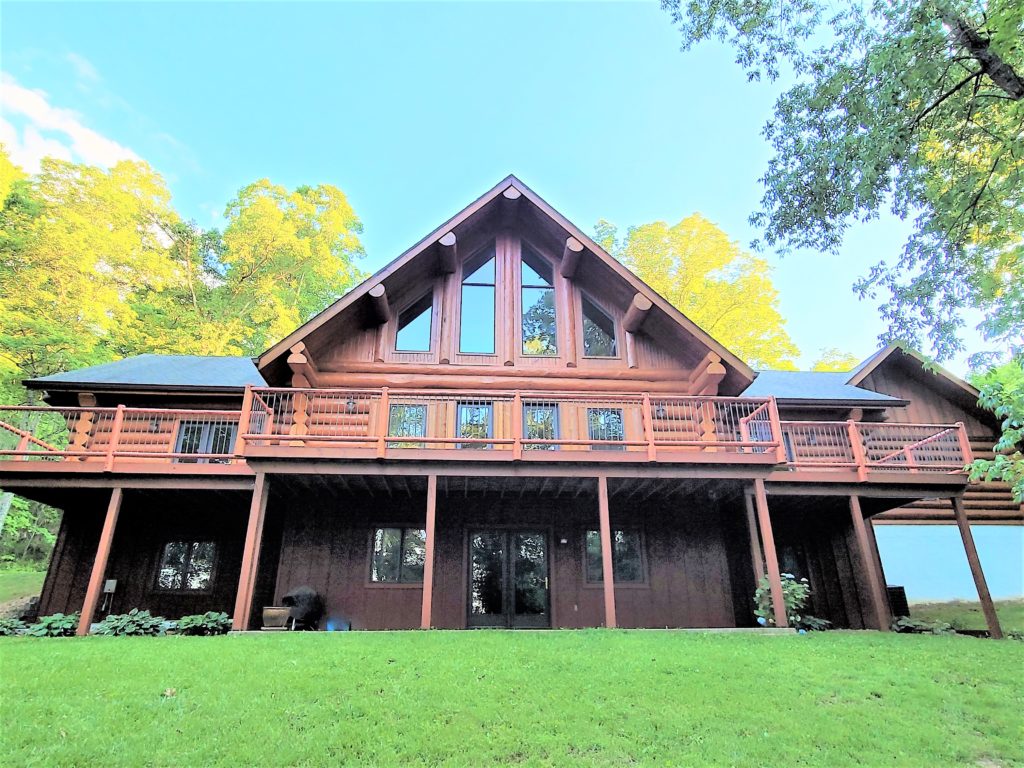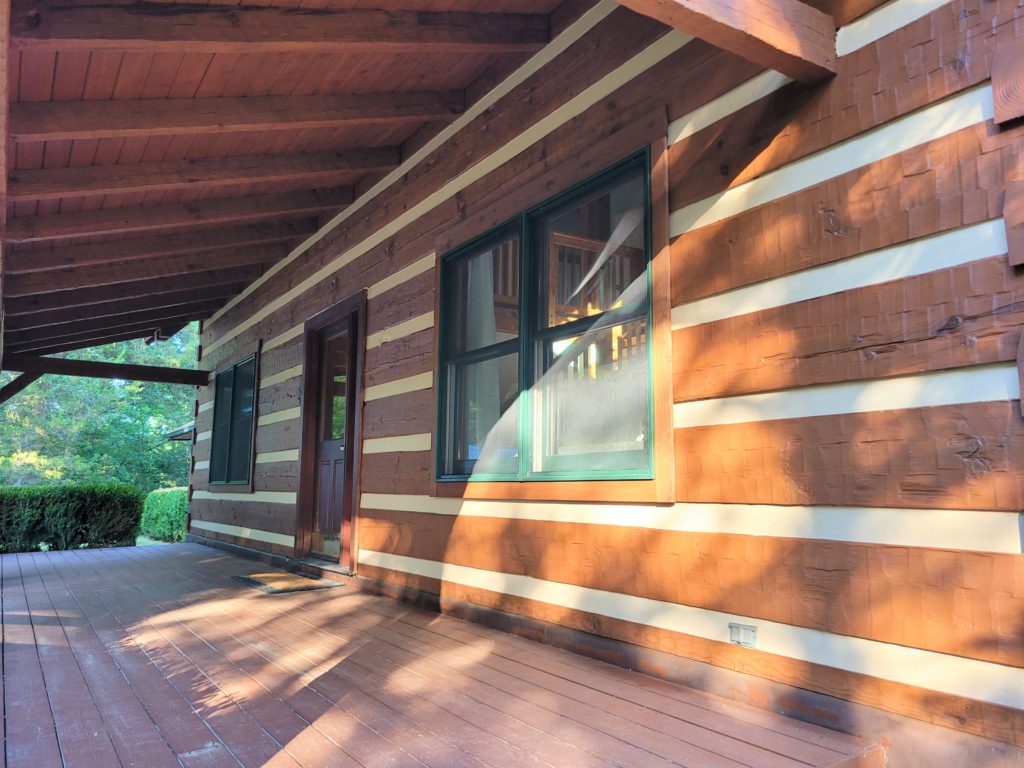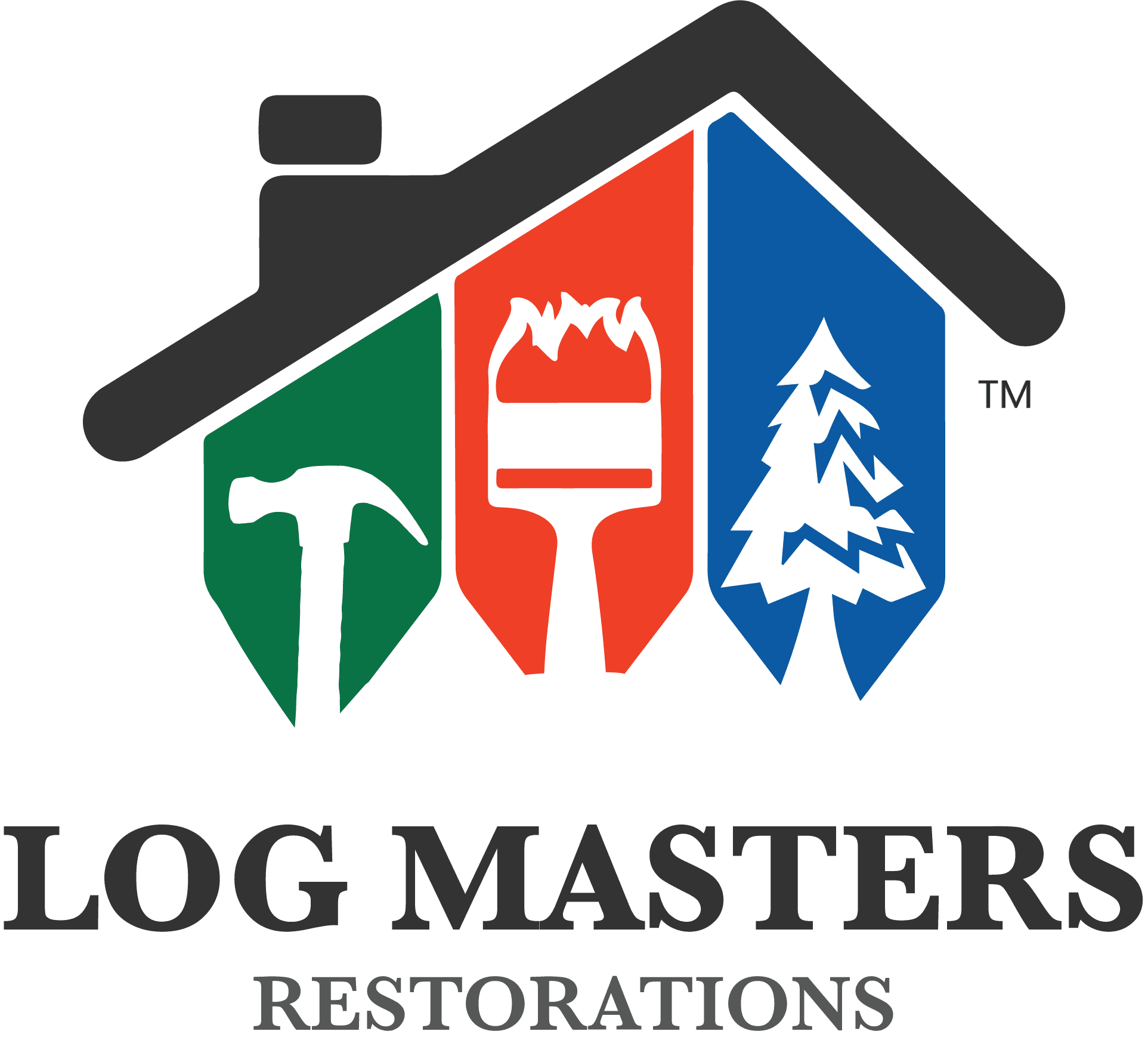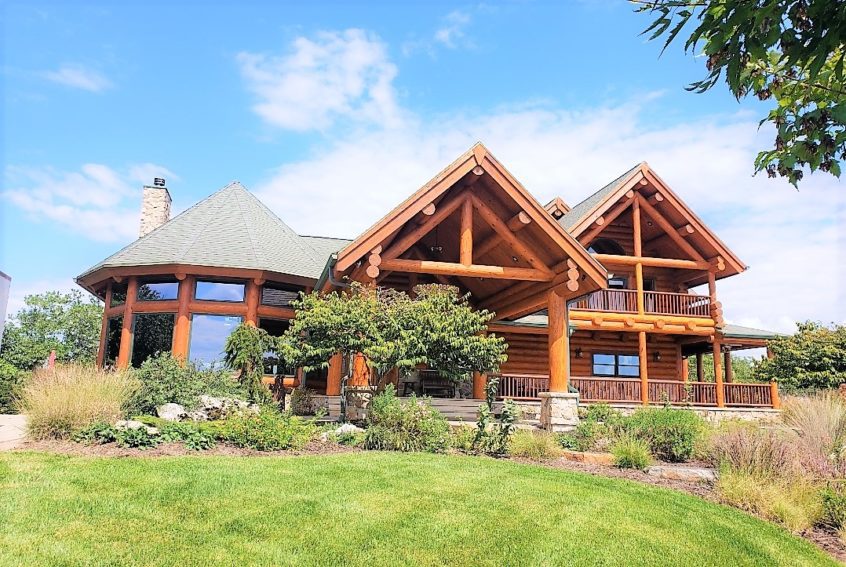


If you ask a room of people to imagine their dream log home, you will undoubtedly get various responses. Log homes come in all kinds of styles and sizes. Many kits exist to make it easy to build one on a ready site. Even living in the city, your existing home can be transformed into an urban cabin if desired. Your next decision will depend on your budget and dream.
This article will briefly focus on:
- Budget Friendly Log Siding for All Homes
- Shapes or Styles of Logs for a Log Home
- Log Exterior Surfaces
- Joints, Corners and Log Ends
- Log Home Wood Species
- Seek a Professional

Checklist for Free Online Estimate
Budget Friendly Log Siding for All Homes
Log siding is gaining in popularity with homeowners. The advantage is homeowners can achieve the appearance of a log home without building or moving and buying a log home. This option is the most affordable. To learn more about log siding, visit our article “Log Home Look to Fit Your Budget.”
Build or Buy
The more costly option is to build or buy an existing log home. If you are not going to create your own, I highly recommend you read our article, “Buying an Existing Log Home?” Do you know the pros and cons? The article discusses the importance of getting a certified log home inspector and where to find one near you.
When deciding to build, it can become overwhelming as you must determine which home best meets your needs. The following is food for thought.
Styles or Shapes of Logs for a Log Home

Log styles can be made in several ways. The most common are Swedish Cope, D-Log, Round/Double D, Hearth/Rectangular, and Irregular. Each style can vary in cost based on supply and demand and season. This is important as it will determine your initial and potential future costs for restoration needs.
Log Home Lumber Suppliers
We get most of our logs in Alamosa, Colorado, from Allpine Lumber Company and Hiawatha Log Homes in Wetmore, Michigan. They both sell kit homes for an affordable price.
Are you aware of your logs EMC?
Log home lumber is cured to the proper Equilibrium Moisture Content or EMC. In the high desert plain of the San Luis Valley in south-central Colorado, situated on the Rio Grande, Alamosa receives an average annual rainfall of 7 inches. This area makes an ideal place to dry out logs. As for Hiawatha, “The majority of our logs come from the Hiawatha National Forest where there’s been ongoing and very successful forest management and replanting since the 1940’s.” This fits our desires and business model to be an environmentally friendly company.
Log Exterior Surfaces
The aforementioned log styles can vary in exterior surface appearance. They can be smooth-milled, peeled, and skinned or handcrafted, typically ranging in sizes from 5 inches to 8 inches. A little tidbit… different log styles are more time-consuming to cut than others. Such as square or rectangular logs cost a bit more than round logs. These factors can significantly affect restoration costs if you need log rot repairs.
Joints, Corners and Log Ends
We have the joints, corners, or log ends to complicate things further. These ends can come in various styles, raising the cost of building or restoration when needed. Butt and pass corners, for example, are relatively straightforward. In contrast, interlocking, saddle notch, dovetail, and flare ends can significantly extend the time needed to install or replace. A high estimate could reflect the additional time it takes to repair or replace a corner.
Log Home Wood Species
Not all trees or log species make good logs for a cabin or house. Hardwood species are the best for building log homes. Cedar and pine are among the favorites of log cabin builders. Pine is the most substantial softwood and one of the most commonly used woods for log homes. Yellow pine, for instance, can be chosen for its resistance to decay. Cedar is loved for its insect and fungus resistance, however, not for its affordability.
Know Your Wood Species
Then again, these are not the only kinds. Oak is famous for its hardwood and natural insect resistance, but should be kiln-dried. It is also among the more expensive woods to choose from. Douglas Fir is used for its red and blond coloring and low shrinkage rate, although it must be treated since they are not resistant to decay, insects, or fungus. Knowing your log home species is critical to understanding your home’s needs and varying restoration costs.
Trees from a relatively high altitude are ideal for house logs; they are slow-growing with tight growth rings. Tight growth rings produce dense wood, which generally results in less cracking or checking as the log dries. You can tell how tight a tree’s rings are by looking at the end, or cross section of a cut log; each circular line or ring depicts one year of growth in the life of the tree.
ARTISAN LOG AND TIMBER HOMES ARTICLE “WHAT ARE THE BEST LOGS FOR BUILDING MY LOG HOME” Taken on 6/14/21 on site https://www.artisanloghomes.com/log-homes-101/what-are-the-best-logs-for-building-my-log-home/
Seek a Professional for Log Home Advice
A log home can be a magical experience as it transports the soul to a time when things were believed to be simpler than today’s busy, stressful environment convoluted with electronics and schedules. For responsible and devoted log homeowners, living in a log cabin has priceless rewards. When a cabin is maintained as directed, it can outlive many modern homes for centuries.
Know Your Log Home Maintenance Budget

We highly recommend seeking professional advice and talking with other log homeowners about what they have learned after living in a log home. Please know your maintenance budget and ensure it fits your dream log home. Restoration can be costly, so regular seasonal maintenance is a priority to avoid an expensive repair. Visit our article for 3 Log Home Tips from Log Masters.

